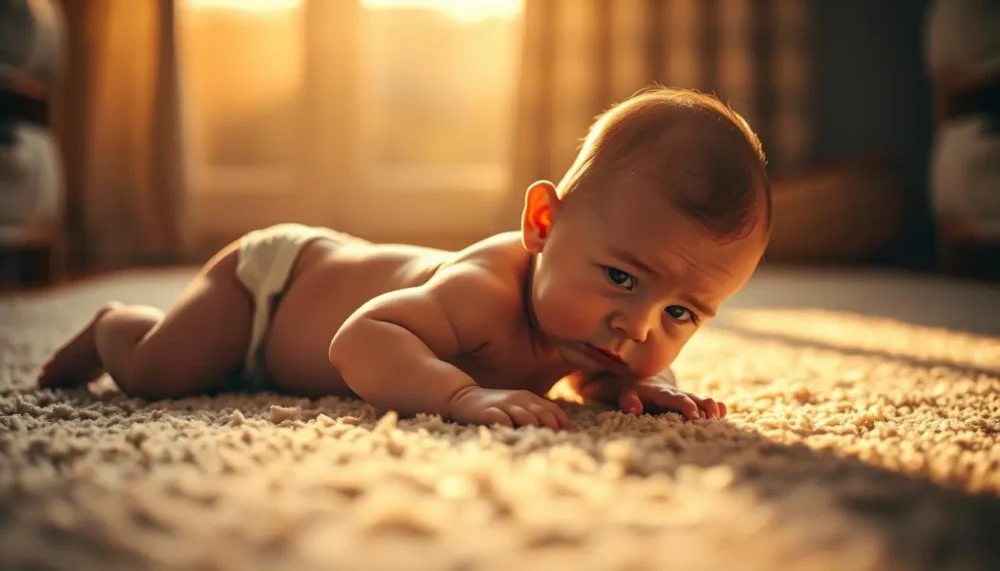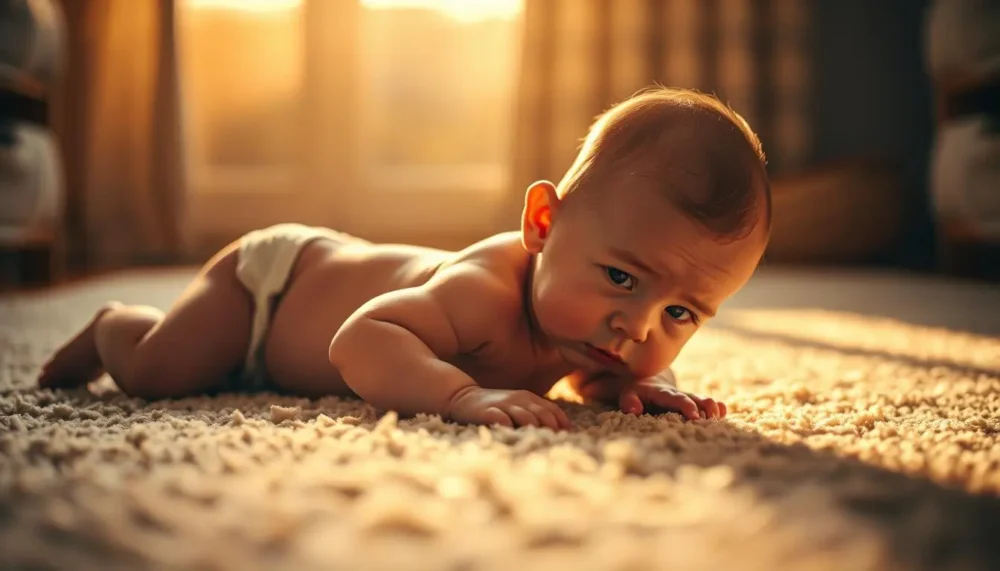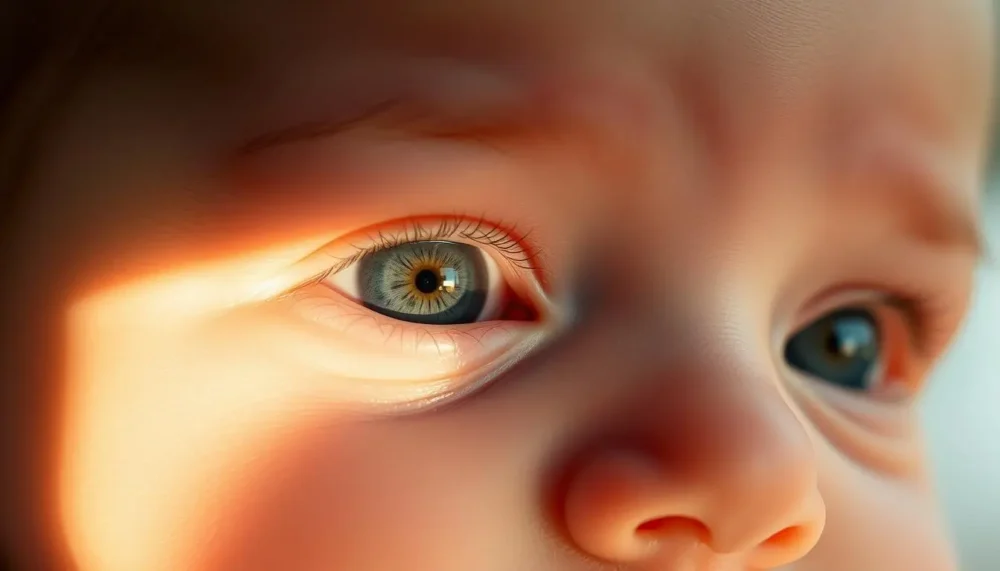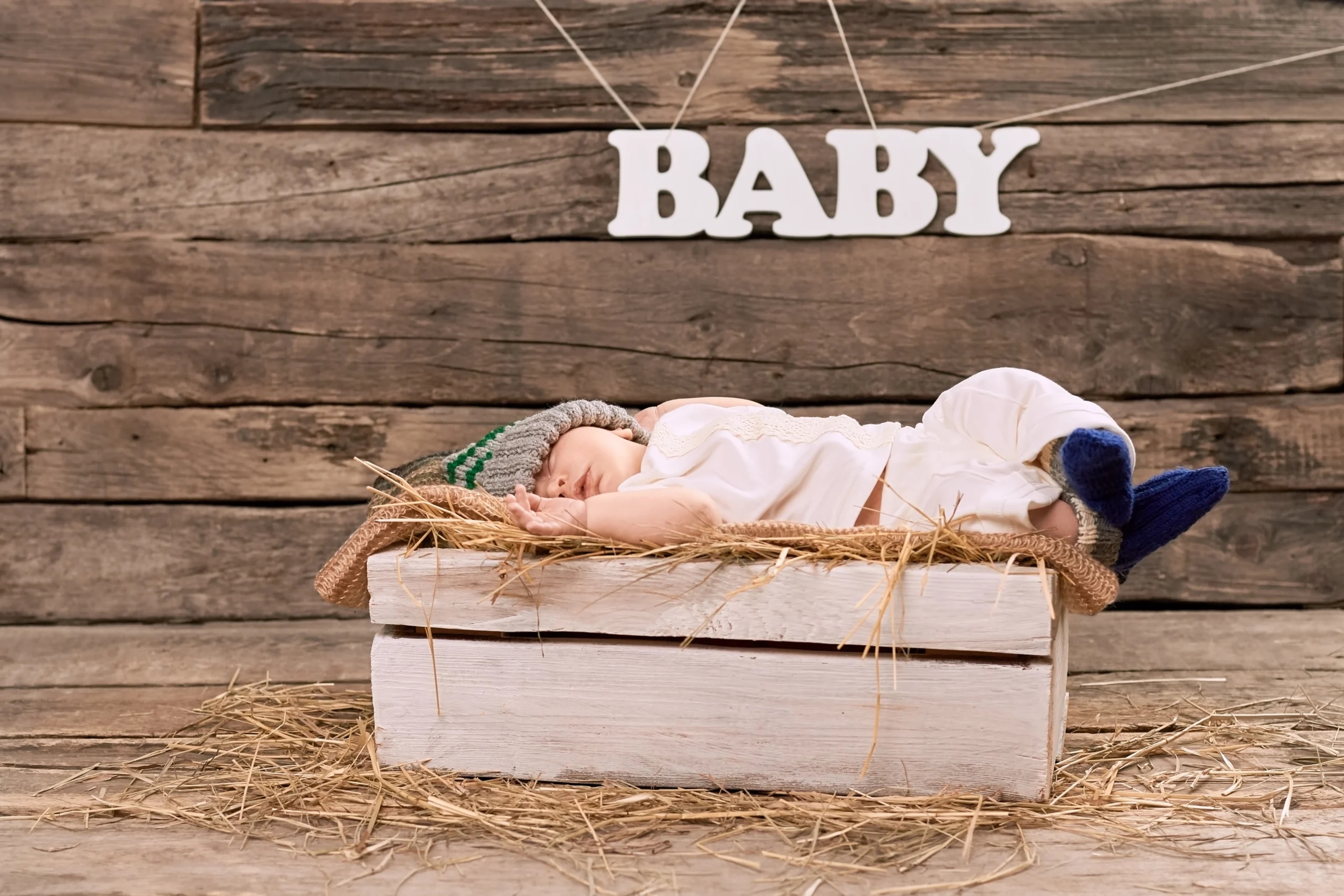When Do Babies Start Talking? 6 Exciting Milestones
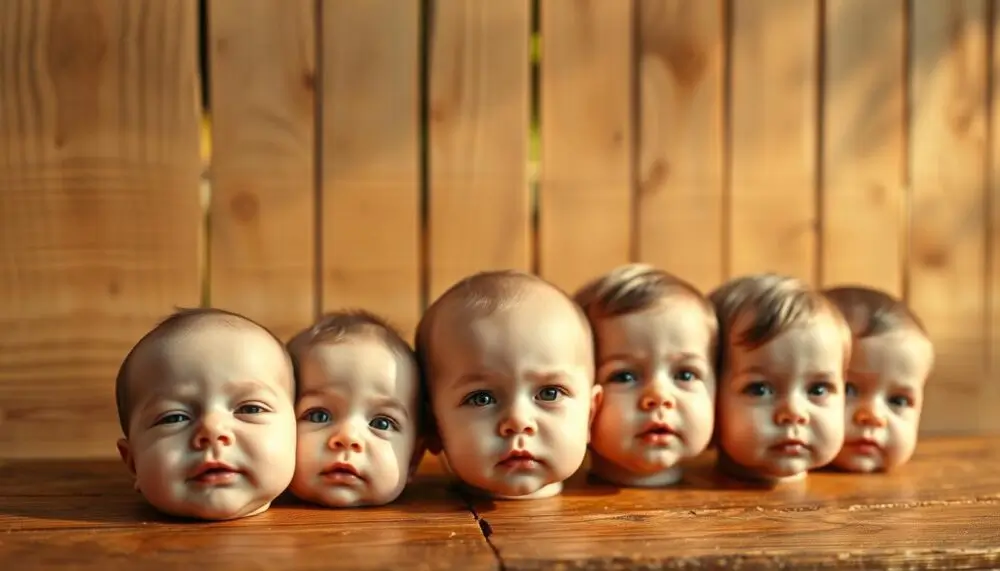
When Do Babies Start Talking? Every baby’s journey to talking is unique. Baby speech milestones, like saying their first words, come in stages. Some say “mama” or “dada” by 12 months, while others take longer. This is a gradual process of sounds, gestures, and words.
Speech development starts before babies say their first words. They begin with cries, coos, and gestures. By 6 months, many start babbling and imitating sounds. This article looks at these milestones, explaining what’s normal and how to support your baby’s language growth.
Key Takeaways
- Most babies utter first words between 10-18 months, but timing varies widely.
- Pre-verbal signals like pointing or eye contact are early steps in infant language development.
- Baby speech milestones help track progress but shouldn’t cause alarm if met slightly late.
- Engaging in conversations and reading books boosts language skills at all stages.
- Consulting a specialist is advised if a child shows no response to sound by 12 months.
Understanding Baby Communication Before First Words
Before they start talking, babies use pre-verbal communication to connect with their caregivers. They send signals through gestures, facial expressions, and sounds. These signals help build trust and support their growth.

Pre-verbal Communication Signals
Babies show their feelings through actions and sounds. Some important signals include:
- Eye contact to connect with caregivers
- Smiling to show happiness or comfort
- Reaching or pointing to show interest
- Facial expressions like frowning to show distress
The Importance of Crying and Cooing
Infant crying and cooing are key to early communication. Different cries mean different things. A high-pitched cry might mean hunger, while odd noises could signal discomfort. Cooing, like saying “goo” or “coo,” is a first step in making sounds.
These sounds help babies practice for future speech. They learn about tone and rhythm.
How Babies Communicate Needs Without Words
Infants show their needs through body language and context. A turned head might mean they’re full, while squirming shows discomfort. Parents can understand these cues by watching for patterns.
Quickly responding to these signals builds trust. It also encourages babies to keep trying to communicate.
When Do Babies Start Talking?
Parents often wonder when do babies start talking?. The first words timeline varies widely. Most infants say their first words between 11 and 14 months. By 18 months, they say at least 50 words.
The average age babies talk for first words is around 12 months. But, many healthy babies speak later without any cause for concern.
Early sounds like “mama” or “dada” may start as early as 6 months. But these are often close approximations. True first words come when babies link sounds with meanings. By 12 months, 75% of babies understand at least one meaningful word.

- Language exposure: Babies in talk-rich environments progress faster
- Hearing health: Undetected hearing issues delay milestones
- Genetic predisposition: Siblings often follow similar timelines
- Individual temperament: Shy babies may delay vocalization
While milestones offer guidelines, there’s a lot of variation. Parents should focus on steady progress, not exact ages. Celebrate small steps like pointing to objects or following simple instructions. These are part of the journey toward meaningful speech.
The Five Stages of Speech Development in Infants
What are the 5 stages of speech development? Every child follows a predictable path to communication. These infant speech stages are the foundation of baby language development. Here’s a guide to their journey:
| Stage | Age Range | Key Sounds | Example |
|---|---|---|---|
| 1: Cooing | 0–3 months | Vowel-like sounds | “Ahh”, “Ooo” |
| 2: Babbling | 4–6 months | Consonant blends | “Baba”, “mama” |
| 3: Jargon | 7–9 months | Rhythm-mimicking | Up/down pitch changes |
| 4: First Words | 10–14 months | Simple nouns | “Mama” (mama), dada) |
| 5: Two-Word Phrases | 18–24 months | Combining words | “More milk”, “no bed” |
Newborns start with reflexive noises like sneezes and hiccups. By month 3, they intentionally repeat vowel sounds like “ahh” and “ooh”. These coos signal social bonding attempts.
Babies experiment with consonant-vowel combos like “baba” or “gaga”. These babbles lack meaning but show sound exploration.
Infants mimic adult speech patterns without real words. They use rising/falling tones and pause patterns, creating “jargon” that resembles conversation.
The first true words emerge, often naming loved ones (mama, dada) or daily items like “ball”. These single-word phrases mark a leap in comprehension.
Toddlers combine 2-3 words like “more juice” or “no night”. This marks the start of complex communication.
Speech Milestones: What to Expect at Each Age
Tracking baby speech milestones by age helps parents understand typical language progress. These infant language benchmarks vary, but general patterns offer guidance. Below outlines key stages from 6 months to 2 years.
At 6 months, infants turn toward sounds, imitate vowel/consonant combinations like “ba” or “da,” and take vocal “turns” during interactions. By 12 months, most babies respond to names, follow basic requests, and say 1-3 simple words like “mama” or “dada.” Gestures like pointing also emerge.
By 18 months, vocabulary expands to 50 words or more, including names of objects, actions, and body parts. Toddlers start using pronouns like “me” and repeat heard words. At 2 years, phrases like “more juice” form, and children ask questions like “Where’s ball?” with 200+ words understood.
- 6 months: Coos, responds to tone, babbles consonants
- 12 months: 1-3 recognizable words, follows commands
- 18 months: 50-word vocabulary, uses gestures
- 2 years: 2-word sentences, asks questions
Every child’s toddler speaking development timeline is unique. Celebrate progress while noting consistent delays. Consult a pediatrician if milestones lag significantly behind these guidelines.
How Many Words Should a 1-Year-Old Be Saying?
Parents often ask, how many words should a 1 year old be saying? By 12 months, most babies say 1–3 words they can be recognized. But, some might say none, while others could say up to 10. What’s important is that they use words like “mama” or “ball” in a meaningful way, even if they don’t say them perfectly.
Look at one-year-old vocabulary growth as part of the first-year language milestones. At this age, babies understand more than they can say. A 12-month-old can recognize over 50 words and follow simple commands like “come here” or pointing to body parts. These skills are important for their future communication.
- Normal range: 0–10 words by 12 months
- Key signs of progress: pointing, gesturing, or imitating sounds
- Gender differences: Boys often trail girls in expressive speech but catch up by 24 months
“Late talkers” who understand a lot but say few words often catch up later. But, if your child doesn’t say any words by 18 months or ignores speech, see a pediatrician. Every child’s first-year language milestones are different, and it’s okay if they take their time.
Encouraging Your Baby’s Speech Development
Parents looking to encourage baby talking can use simple methods every day. These activities for speech development help build basic skills and strengthen the bond between caregiver and baby. Studies show that regular interaction can increase vocabulary and social skills.
Everyday Language Boosters
- Talk Through Routines: Talk about diaper changes, meals, and walks to introduce new words and sounds.
- Sing and Play: Sing nursery rhymes and play peekaboo to teach rhythm and conversation skills.
- Use Parentese: Speak in a high-pitched, slow voice with big expressions to grab attention and teach clear speech.
Reading as a Building Block
Reading together is great for reading to babies language skills. Pick board books with colorful pictures and simple words. Point to objects and name them, then ask questions like, “What’s the cat saying?” This makes reading fun and helps babies learn.
Studies show babies who hear books every day have bigger vocabularies by age two.
Screen Time Considerations
| Age | Recommendations |
|---|---|
| Under 18 months | Avoid except video chatting with family |
| 18–24 months | Limit to 30 minutes/day of high-quality programs |
| 2+ years | Co-view with child; choose shows with language-rich content |
Choose apps or shows that need interaction, like pointing or answering questions. Too much screen time without watching can slow down language growth, says the AAP.
Should a 2-Year-Old Be Talking? Understanding Toddler Speech
Parents often ask, should a 2 year old be talking? At this age, most toddlers expand on earlier language skills. They usually have a vocabulary of 50-200 words. They might say two-word phrases like “more juice” and start simple stories.
Speech errors are common, like saying “goed” instead of “went.” This is normal as their language skills grow.
Normal Speech Patterns for 2-Year-Olds
- Use 50+ recognizable words and combine two-three words in sentences
- Ask questions like “What’s that?” or “Go bye-bye?”
- Follow basic instructions, such as “Bring me your shoe”
When Limited Vocabulary May Signal a Concern
If a child has fewer than 50 words or avoids combining words by age two, it may warrant a pediatrician’s review. Other flags include:
- No interest in imitating sounds or words
- Difficulty understanding simple requests
- Regression in previously acquired skills
Differences Between Boys and Girls in Speech Development
Research shows boy vs girl speech development trends. Girls often hit verbal milestones earlier. They use more complex sentences and have clearer pronunciation at age two. Boys might lag a bit but catch up later.
These are just averages. Every child is different. Celebrate their progress and watch for red flags. If concerns last, talk to a specialist for early support.
Warning Signs of Speech and Language Delays
Spotting speech delay warning signs early is key. Every child grows at their own speed. Yet, some language development red flags might mean they need extra help. Here are the signs to look out for at different ages:
- Under 12 months: No babbling by 9 months, few vowel/consonant sounds, or ignoring loud noises.
- 12–18 months: No single words by 15 months, not pointing or waving, or ignoring what you say.
- 18–24 months: Using fewer than 10 words, no two-word phrases by 24 months, or not following simple commands.
- 2–3 years: Trouble putting words together, speech hard for strangers to understand, or getting very upset when trying to say something.
Other when to worry about baby not talking signs include avoiding eye contact, doing the same thing over and over, or losing language skills they once had. These could be signs of autism or hearing problems. If you see several red flags, talk to a doctor or speech therapist right away. Early help can make a big difference without overreacting to normal differences. Trust your gut—knowing what to do next is important.
When to Consult a Speech-Language Pathologist
Not every child grows at the same speed. But, some signs mean it’s time for help. Early pediatric speech therapy can really help. Here’s what parents should know.
Types of Speech Therapy for Young Children
Therapists create plans that fit each child’s needs. They use different methods, like:
- Play-based therapy: Uses games and toys to practice speaking.
- Parent-implemented strategies: Teaches parents how to help at home.
- Specialized interventions: Uses exercises to improve specific skills.
What to Expect During a Speech Evaluation
A speech language evaluation watches how a child talks. It might include:
- Assessment activities: Tasks like naming objects or following directions.
- Parent interviews: Talks about the child’s development and progress at home.
- Result review: A detailed report on what the child does well and what they need to work on.
Early Intervention Options and Benefits
| Option | Description | Benefits |
|---|---|---|
| Public Programs | Federally funded programs like Early Intervention Programs (EIP) | Free or low-cost services, including home visits |
| Private Therapy | One-on-one sessions with licensed SLPs in clinics | Customized plans and flexible scheduling |
| Telehealth | Online sessions using video calls | Accessibility from home and reduced travel time |
Early help for speech delays can greatly improve a child’s future. Many states offer free or low-cost help for kids under three. Ask your pediatrician for recommendations or look into Easterseals or ASHA for more information.
Conclusion: Supporting Your Child’s Unique Communication Journey
Every child’s path to speaking fluently is different. Most start talking clearly between 3 and 4 years old. But, how fast they get there depends on their environment and genes.
Parents often wonder when babies start talking fluently. But, it’s a gradual process. It starts with babbling and then moving to full sentences.
Supporting your child’s language development is easy. Just talk, read, and respond to them. This helps them grow. Try to limit screen time and focus on real conversations.
Every small step counts. Like when they point or say two words. These are big achievements.
Trust your gut when checking if your child is meeting milestones. Some kids might not hit certain marks as early as others. If you’re worried, talk to a doctor or speech therapist. Early help can make a big difference.
Every child is different, and that’s okay. Make a space where they feel safe to explore and make mistakes. Whether they talk early or not, always encourage them. With love and the right strategies, they’ll do great.
FAQ
When do babies start talking?
Babies usually say their first words between 11-14 months. But, it can happen earlier or later. Remember, talking grows gradually.
At what age do babies start talking fluently?
Kids start talking fluently around 3-4 years old. At first, they use simple sentences. But, they keep getting better at speaking as they grow.
What are the 5 stages of speech development?
The five stages of speech development are:
- Stage 1: Cooing (0-3 months)
- Stage 2: Babbling (4-6 months)
- Stage 3: Speech-like Sounds (7-9 months)
- Stage 4: First Words (10-14 months)
- Stage 5: Word Combinations (18-24 months)
Each stage is a big step in learning language.
Should a 2 year old be talking?
Yes, by 2, kids should know 50-200+ words and start making simple sentences. But, everyone grows at their own pace.
How many words should a 1 year old be saying?
One-year-olds usually say 1-3 words. Some might say none, while others say up to 10. They often understand more than they can say, knowing over 50 words.


